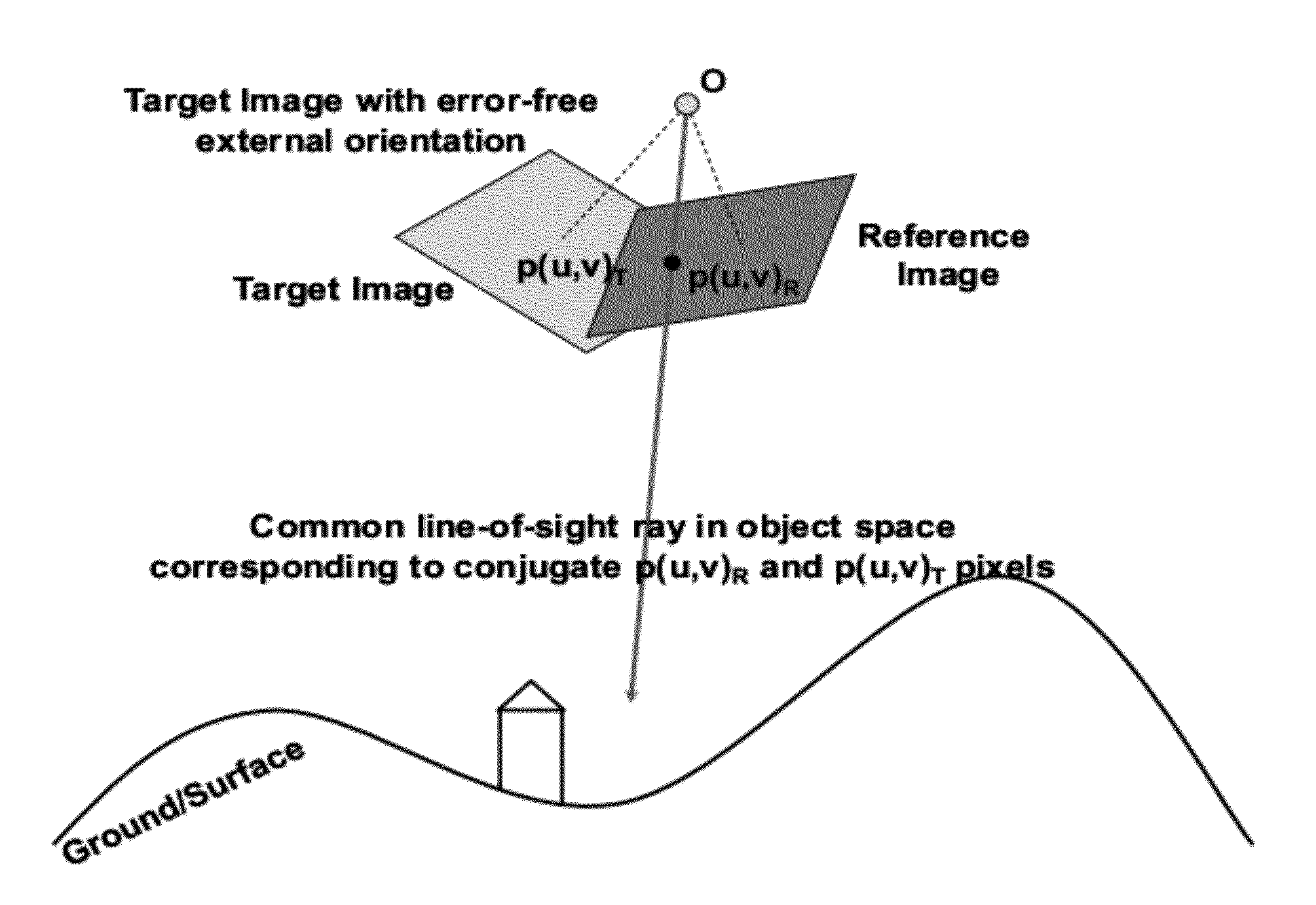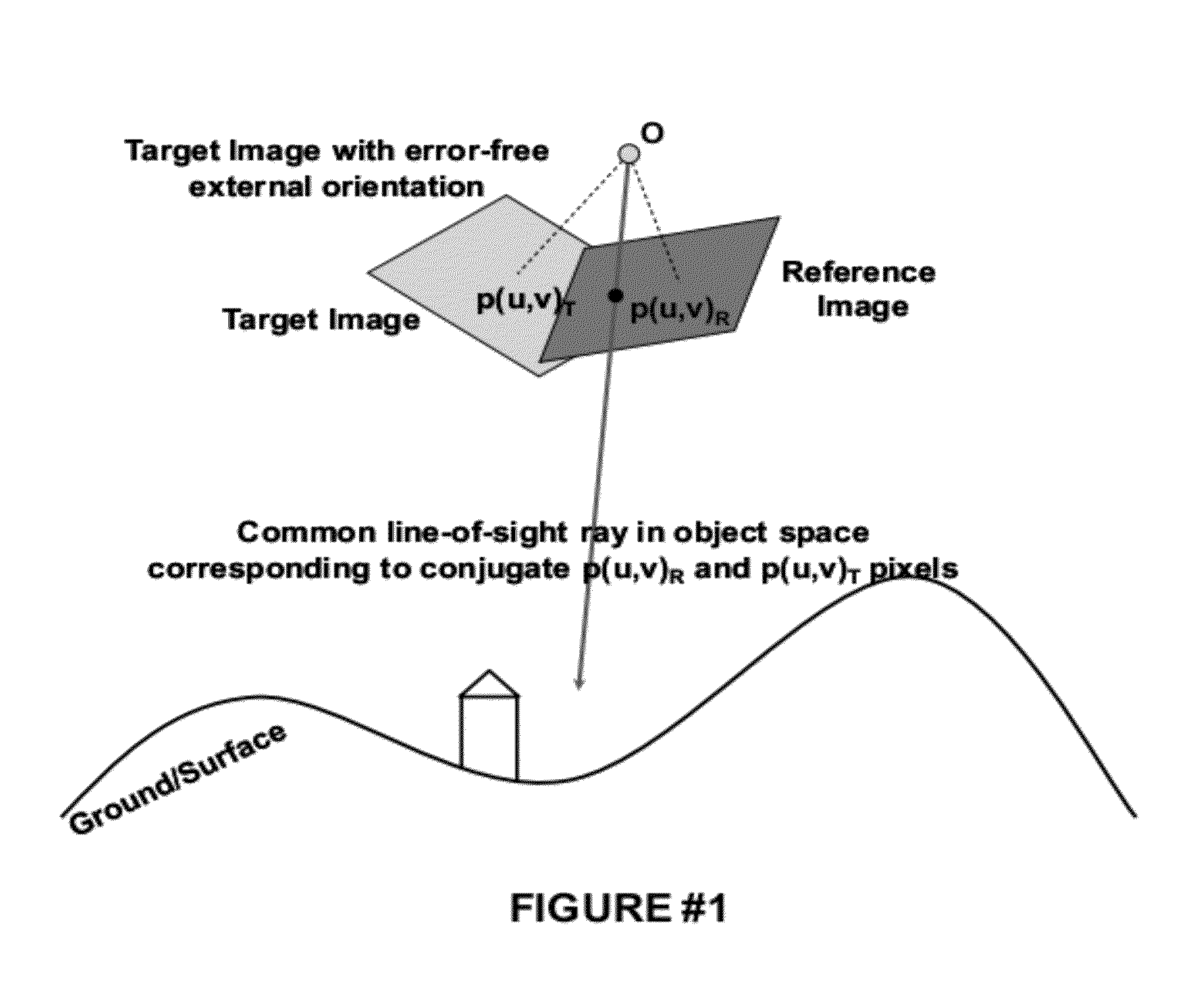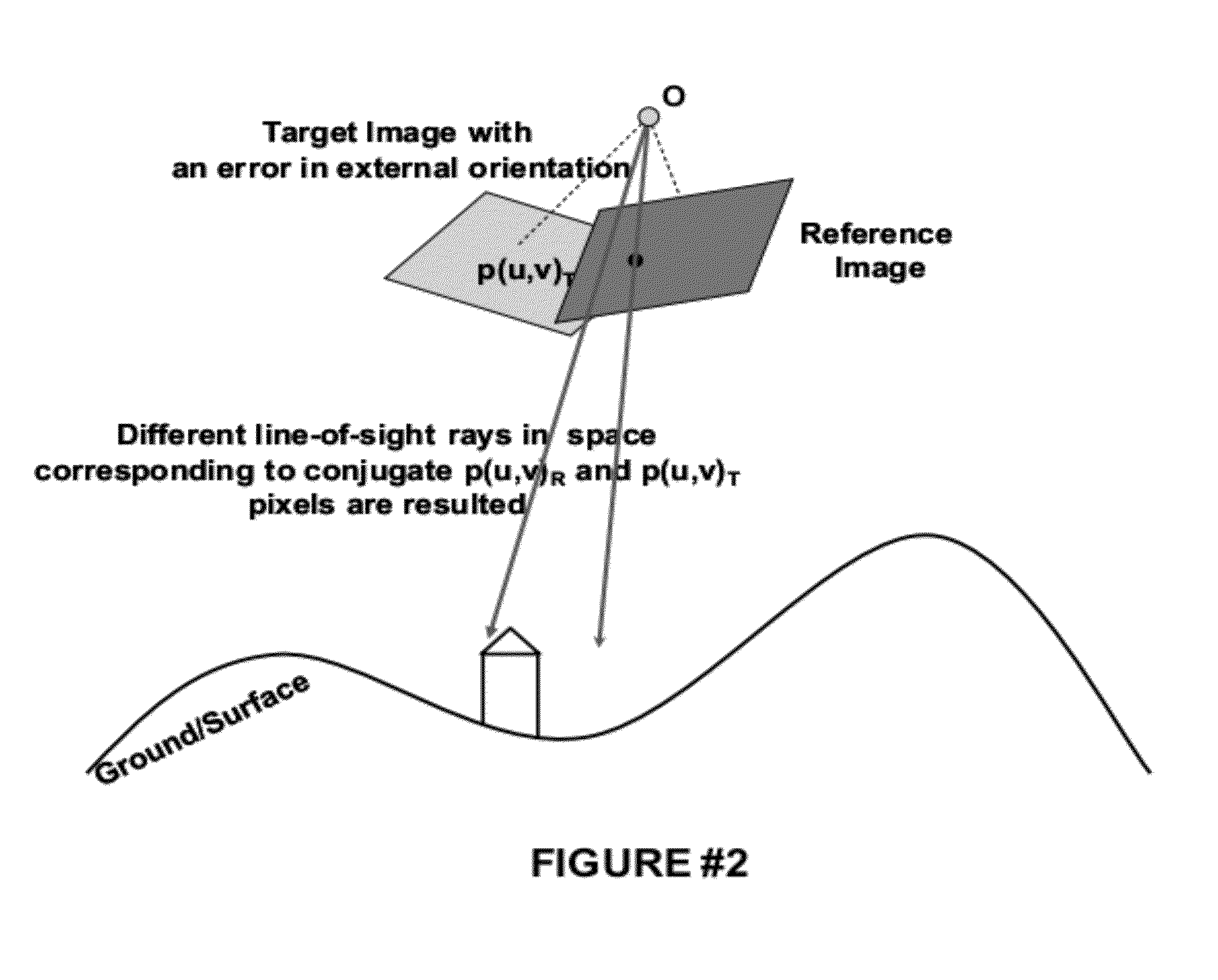Spatial accuracy assessment of digital mapping imagery
a technology of spatial accuracy and mapping imagery, applied in the field ofphotogrammetric mapping, can solve the problems of difficult definition of clear and unique geometric standards for such systems (in analogy to their analog counterparts), limited validation process, and inability to guarantee the accuracy of each and every imaging mission, so as to achieve robust and accurate correspondence, the effect of increasing the number of images resulting from typical triangulation missions
- Summary
- Abstract
- Description
- Claims
- Application Information
AI Technical Summary
Benefits of technology
Problems solved by technology
Method used
Image
Examples
Embodiment Construction
[0025]1. Terminology and Notations
[0026]A geo-referenced optical image is a Line-Of-Sight measurement device. It associates a 3D straight line in object space with every given pixel p(u,v) in that image. From geometric point of view that means that this 3D line is the geometric place of all points in space which project into p(u,v). Analytically speaking, a geo-referenced image is assigned with the so-called external orientation information which in turn can be represented either explicitly or implicitly. In the explicit representation (also entitled as rigorous photogrammetric model) the line-of-sight originating from pixel p(u,v) can be easily computed from the external orientation parameters (decomposed into interior and exterior orientation) to result with the parametric 3D line in space represented parametrically by [X(τ) Y(τ) Z(τ)]T=[XC YC ZC]T+[ux uy uz]Tτ where [XC YC ZC]T is the 3D camera position in space at the time of the exposure and [ux uy uz]T is a unit direction alon...
PUM
 Login to View More
Login to View More Abstract
Description
Claims
Application Information
 Login to View More
Login to View More - R&D
- Intellectual Property
- Life Sciences
- Materials
- Tech Scout
- Unparalleled Data Quality
- Higher Quality Content
- 60% Fewer Hallucinations
Browse by: Latest US Patents, China's latest patents, Technical Efficacy Thesaurus, Application Domain, Technology Topic, Popular Technical Reports.
© 2025 PatSnap. All rights reserved.Legal|Privacy policy|Modern Slavery Act Transparency Statement|Sitemap|About US| Contact US: help@patsnap.com



